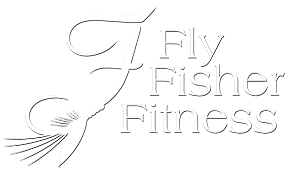Beat Aging and Chronic Disease

A personal essay. How I beat aging and chronic disease through self-education and boots-on-the-ground effort.
Early Experience: Beat Aging and Chronic Disease
In the beginning my wildlife biologist career mandated collateral duties in law enforcement and as a wildland firefighter. Thus, required fitness testing and medical professionals signing off and approving me “fit for arduous duty” was standard procedure. The mandate was to workout “on the clock,” 3 hours per week at least. I was trained in arduous duty fitness, equipped with gear and given space and time.
I exercised because I had to. If I was out of shape, it would have been obvious on a fire or at an incident and I could jeopardize mine and others’ safety. Imagine being on a wildfire where your crew members are physically out of shape.
To be honest, I don’t know if I would have kept to an exercise program if I wasn’t required to. Career (I moved 5 times), family and life obligations were a constant, polarizing force.
Science Investigator
As I got older, I was driven to exercise by fear of missing out (FOMO). Meaning, fear that I would miss some intervention, something that I should have known about and taken action to prevent, say high blood pressure or worse, quadruple bypass surgery. I could hear blame and guilt it in my head, if you would have started earlier, this disease wouldn’t have irrevocably embedded itself. I exercised to beat aging and chronic disease.
I was seeking answers to my fear around age-related physical decline, decay and premature death—not gray hair but the decline you can’t see. A few of my peers died (they didn’t even have gray hair) from “massive heart attacks” while exercising on work time. That’s how my father died at 53, not exercising, he was getting up for another cup of coffee. At 15, I was traumatized and shocked into growing up. As I aged, I took nothing for granted and took every precaution to beat aging and chronic disease.
I made every effort to quiz physician assistants, advanced practice registered nurses and doctors about health maintenance. What proactive measures could I take for disease prevention? How could I beat aging and chronic disease???
However, an important distinction, my conversations with medical professionals were clinical conversations. Doctors would say, “you’re in great shape.” I knew this. I wanted proactive information—what are the best practices to stay in great shape as I age? They didn’t have answers.
My questions were about aerobic, anaerobic, intensity levels, intervals, V02 and proactively exercising to prevent disease, decline, decay and to promote health—what you could call, applied fitness science questions went unanswered. I quickly realized, I had to discover and decipher these answers myself.
My father (and older brother at 56) died of a lifestyle disease, atherosclerosis, with additional, exacerbating complications. It was devastating, sad and scary. I knew I was not my father. But I wanted to find the science on the fastest, most effective measures to avoid age-related decline.
Transformation
I combined my expertise in the practical, physical-side of fitness with the clinical side of fitness and transformed myself into a fitness scientist. My desk reference was peer-reviewed medical journals. My laboratory was the track, the gym and my body. I educated myself on the science of fitness-related aging from inside the subject, boots-on-the-ground.
What I learned caused a tectonic shift. It is more—broader, deeper and more fulfilling than anything I could have imagined. Words fall short, but I’ll make every effort to share it the best I can on this blog.
The first thing to know is aging is as natural as your DNA. It’s biology but it is interpreted, shaped and driven by mass culture. What we hear about aging—ailments and deterioration, are stories, fiction that should not be blindly accepted as “a normal part of getting older.” You can strongly influence how you age.
Nonfiction
The science is clear, 70% of disease—heart attacks, stroke, diabetes, falls, fractures, and the common cancers are primarily caused by lifestyle. Further, genes determine about 20% of how you age. The other 80% is in your control.
Researchers examining the chronology of disease found three-millennia of data recognizing a causal relationship with physical inactivity and reduced functional capacity (ability to perform tasks), disease and health. One millennium equals a thousand years! That’s a mountain of causal data.
Lack of activity destroys the good condition of every human being while movement and methodical physical exercise saves and preserves it. Plato
An exercise lifestyle helped me avoid (family history) heart issues, diabetes and high blood pressure. I sailed through more serious bouts with cancer and continuous exercise keeps me full of energy, strong, sturdy and supple. I do aerobic work 4 days per week and resistance train three days, more detail to come on other posts. Through a continuous exercise effort, I win against aging and chronic disease every day.
Beat Aging and Chronic Disease
According to the Centers for Disease Control (CDC), nearly half of adults in the U.S. are living with at least one chronic illness. Even though a fitness regimen would reduce disease severity and progression, medical professionals are shy about recommending exercise. Reading these “tea leaves,” I see a call to become our own, hands-on personal healthcare advisor. Wouldn’t that be a fun way to spend your retirement? A resurgence of meticulous focus directed toward your vitality. Having one or more chronic conditions (even cancer) is not a reason to avoid exercise it’s a reason to dive all-in to exercise. Flip the typical doctor-filled retiree life on its head. Bring fitness to the forefront and marginalize disease.
Exercise is the prescription you administer yourself and it’s more powerful than anything a physician can prescribe. It requires a feet-on-the-ground effort. No money, no budget, no athletic ability, no sports. Just you—an experiment of one. You determine how far you go, how fast you get there—but with effort, you will get there, guaranteed. Here’s what exercise promises: a 2019 Sports Medicine and Health Science Report stated, “the implementation of daily physical activity and exercise prevention interventions support an 80% reduction in cardiovascular risk, 90% reduction in type 2 diabetes risk, 33% reduction in cancer risk, and in some cases reductions in all-cause mortality.” You simply cannot get this kind of life-giving, potent, proactive medicine anywhere except from yourself. You are in control of the most powerful health-giving care available.
Physical activity sends the message of growth and vitality. Your body is listening.
Download my free e-book, Quick Guide to Strength, Stamina and Sturdiness.
Use this contact form to get in touch.
Tags: Aging, Chronic Disease, Fitness Expert, Lifestyle, Virtual Fitness Program, Winning
Categorized in: General Knowledge
